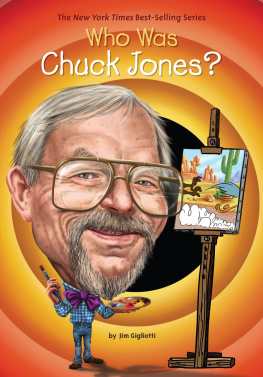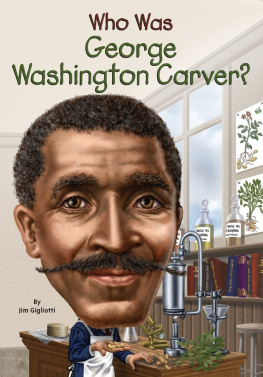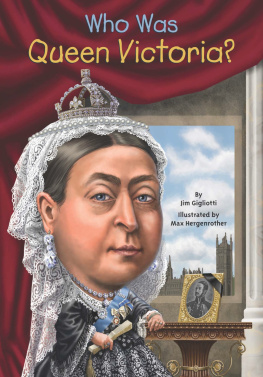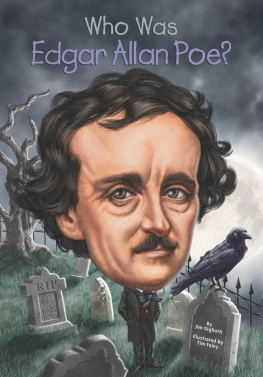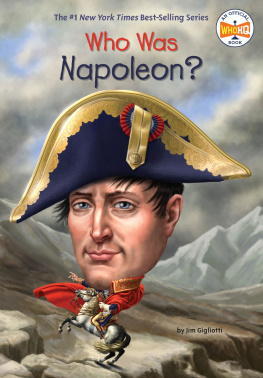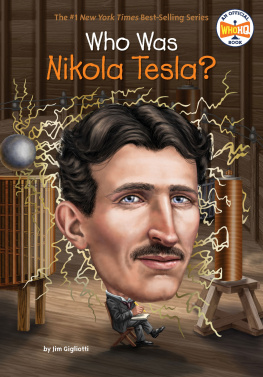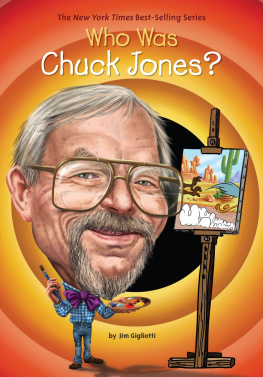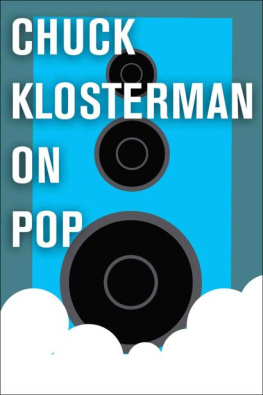Gigliotti - Who Was Chuck Jones?
Here you can read online Gigliotti - Who Was Chuck Jones? full text of the book (entire story) in english for free. Download pdf and epub, get meaning, cover and reviews about this ebook. year: 2018, genre: Detective and thriller. Description of the work, (preface) as well as reviews are available. Best literature library LitArk.com created for fans of good reading and offers a wide selection of genres:
Romance novel
Science fiction
Adventure
Detective
Science
History
Home and family
Prose
Art
Politics
Computer
Non-fiction
Religion
Business
Children
Humor
Choose a favorite category and find really read worthwhile books. Enjoy immersion in the world of imagination, feel the emotions of the characters or learn something new for yourself, make an fascinating discovery.
- Book:Who Was Chuck Jones?
- Author:
- Genre:
- Year:2018
- Rating:5 / 5
- Favourites:Add to favourites
- Your mark:
- 100
- 1
- 2
- 3
- 4
- 5
Who Was Chuck Jones?: summary, description and annotation
We offer to read an annotation, description, summary or preface (depends on what the author of the book "Who Was Chuck Jones?" wrote himself). If you haven't found the necessary information about the book — write in the comments, we will try to find it.
Who Was Chuck Jones? — read online for free the complete book (whole text) full work
Below is the text of the book, divided by pages. System saving the place of the last page read, allows you to conveniently read the book "Who Was Chuck Jones?" online for free, without having to search again every time where you left off. Put a bookmark, and you can go to the page where you finished reading at any time.
Font size:
Interval:
Bookmark:
For Joycelyn, because youre so wovewyJG
For Nathan, because a creative life is the best lifeJH
PENGUIN WORKSHOP
Penguin Young Readers Group
An Imprint of Penguin Random House LLC
If you purchased this book without a cover, you should be aware that this book is stolen property. It was reported as unsold and destroyed to the publisher, and neither the author nor the publisher has received any payment for this stripped book.
Penguin supports copyright. Copyright fuels creativity, encourages diverse voices, promotes free speech, and creates a vibrant culture. Thank you for buying an authorized edition of this book and for complying with copyright laws by not reproducing, scanning, or distributing any part of it in any form without permission. You are supporting writers and allowing Penguin to continue to publish books for every reader.
Text copyright 2017 by Jim Gigliotti. Illustrations copyright 2017 by Penguin Random House LLC. All rights reserved. Published by Penguin Workshop, an imprint of Penguin Random House LLC, 345 Hudson Street, New York, New York 10014. PENGUIN and PENGUIN WORKSHOP are trademarks of Penguin Books Ltd. WHO HQ & Design is a registered trademark of Penguin Random House LLC.
Library of Congress Cataloging-in-Publication Data is available.
ISBN 9780448488578 (paperback)
ISBN 9780515159172 (library binding)
ISBN 9781524786571 (ebook)
Version_1
Chuck Jones was eight years old and living in Ocean Park, California, when a stray cat named Johnson walked up the sand to his back doorstep one summer day in 1921.
Chuck had never seen the skinny, short-haired cat before. He called him Johnson, because that was the name written on a small, wooden tag around the cats neck. Chuck liked Johnson, and Johnson liked Chuck. So Johnson decidedas anyone with a cat knows, it was Johnsons ideato stay with the Jones family for a little while.
Chuck laughed when Johnson would bat a grapefruit into a corner of the house, trapping it so he could bite into it and get at the juicy inside. And he laughed when Johnson would jump into the ocean and climb onto the shoulders of an unsuspecting swimmer. And when Johnson, covered in bits of tar and seagull feathers, surprised a group of sunbathers on the beach one day.
By watching Johnson, Chuck realized that animals have their own personalities, just like humans do. And he realized that it was the unexpected things in life that made people laugh.
When Chuck grew up to direct cartoons, he often used animals to tell his stories. And not just any animals, but some of the most famous cartoon animals ever created: Bugs Bunny, Daffy Duck, the Road Runner, Wile E. Coyote, Pep Le Pew, Michigan J. Frog, and many more. His characters starred in short cartoons and feature-length cartoons, television shows and movies.
What made Chucks cartoon characters so memorable was that each had its own special personality, just like Johnson. And each behaved in surprising ways, just like Johnson. A rabbit sang opera. A skunk fell in love with a cat, a frog broke into a song-and-dance routineand a coyote tried all sorts of crazy ways to catch a roadrunner in the desert. And they all made people laugh. Many of Chucks creations have entertained children and adults for more than fifty years!
Growing Up in California
When Chuck Jones was a youngster, he loved stories. Chuck grew up before most people had radios and before television existed. But he enjoyed reading interesting books. He delighted in hearing the fantastic tales his relatives told. And he liked watching people act out funny performances onstage and in the movies.
Chuck was born Charles Martin Jones in Spokane, Washington, on September 21, 1912. His fathers name also was Charles. His mothers name was Mabel. His oldest sister, Margaret, was born in 1908. Another sister, Dorothy, was born in 1910. Chucks father worked at many different jobs. When he first met Mabel in 1906, he worked for a railroad company. That company sent him to Panama for a while to help work on the Panama Canal. Margaret and Dorothy were born in Panama, but the family moved back to the United Statesto Spokane, Washington shortly before Chuck was born. The family moved to southern California in 1913, when Chuck was about six months old. Chucks younger brother, Richard, was born two years later.
Chucks father wanted to open and run his own business. He had many different ideas about how to get started. Unfortunately, none of his businesses were very successful. He tried buying and selling land, growing flowers, even selling avocados, but nothing seemed to work out quite right.
Every time Chucks father started a new business, he ordered nice pencils and good paper on which he printed the name of his company. And every time the new company failed, he had stacks of paper and boxes of pencils left over. Since they all had the company name on them, they were no longer of any use to Mr. Jones. He always gave the paper and the pencils to his children. Chuck and his siblings usually had the best paper and the most pencils of any kids in their neighborhood. And they put it all to good use! Chuck drew at least twenty pictures every day for as long as he could remember. He was getting good at it, too. Chucks talent began to show at a very early age, his brother later said.
Mabel encouraged her children to draw. She would never criticize their drawings, but she never praised them unless she really meant it, either. Instead, she just let them have fun with their artwork. It was a happy experience to draw for the joy of drawing, Chuck said.
The Jones family moved several times throughout southern California. They lived in and around the Hollywood area and sometimes out by the beach. Wherever the family moved, Chucks father made sure that they rented a house that came with furniture and books already in place. And not just any books, Chuck said, but good books. To Chucks father, that meant books by famous authors such as Charles Dickens, Mark Twain, and O. Henry. Mr. Jones thought that reading was very important. In fact, conversation was not permitted at breakfastonly reading was allowed. If one of the Jones children forgot to bring a book to the table, he or she could read the cereal box! So Chuck learned to read by the time he was three years old. As he grew, he went through all the good books in all their different houses, and the not-so-good ones, too.
When Chuck wasnt reading, he listened to his uncle Lynn tell stories. Uncle Lynn told some pretty crazy tales. Sometimes they were just silly, like one about a zebra whose stripes had slipped off his back. At other times, the stories helped the kids feel better. When Teddy, the Jones family dog, died, Uncle Lynn said that the dog had called him to say he was okay. Uncle Lynn wasnt entirely sure where Teddy was calling from, but he thought it might have been from Dog Heaven.
On some weekends, Chuck and Richard would visit Uncle Kent, who sold cars in downtown Los Angeles. Uncle Kent always gave the boys money to see a live vaudeville show. Vaudeville had many different performers onstage, one after another. The first might be an acrobat, and the next a singer. Chuck liked the comedians best. He always enjoyed their funny skits and jokes.
Chuck learned a lot about comedy from watching the vaudeville acts. And he learned from watching silent movies, too. When Chuck was about six years old, his family moved to a house on Sunset Boulevard in Hollywood. The house was only a couple of blocks away from where movie star Charlie Chaplin built his own studio in 1918. Chuck sometimes sat outside and saw famous stars such as Chaplin or Mary Pickford or Lloyd Hamiltonthe greatest stars of the silent moviesgoing to or from work. This was almost a decade before talking picturesmovies with soundwere invented.
Font size:
Interval:
Bookmark:
Similar books «Who Was Chuck Jones?»
Look at similar books to Who Was Chuck Jones?. We have selected literature similar in name and meaning in the hope of providing readers with more options to find new, interesting, not yet read works.
Discussion, reviews of the book Who Was Chuck Jones? and just readers' own opinions. Leave your comments, write what you think about the work, its meaning or the main characters. Specify what exactly you liked and what you didn't like, and why you think so.

